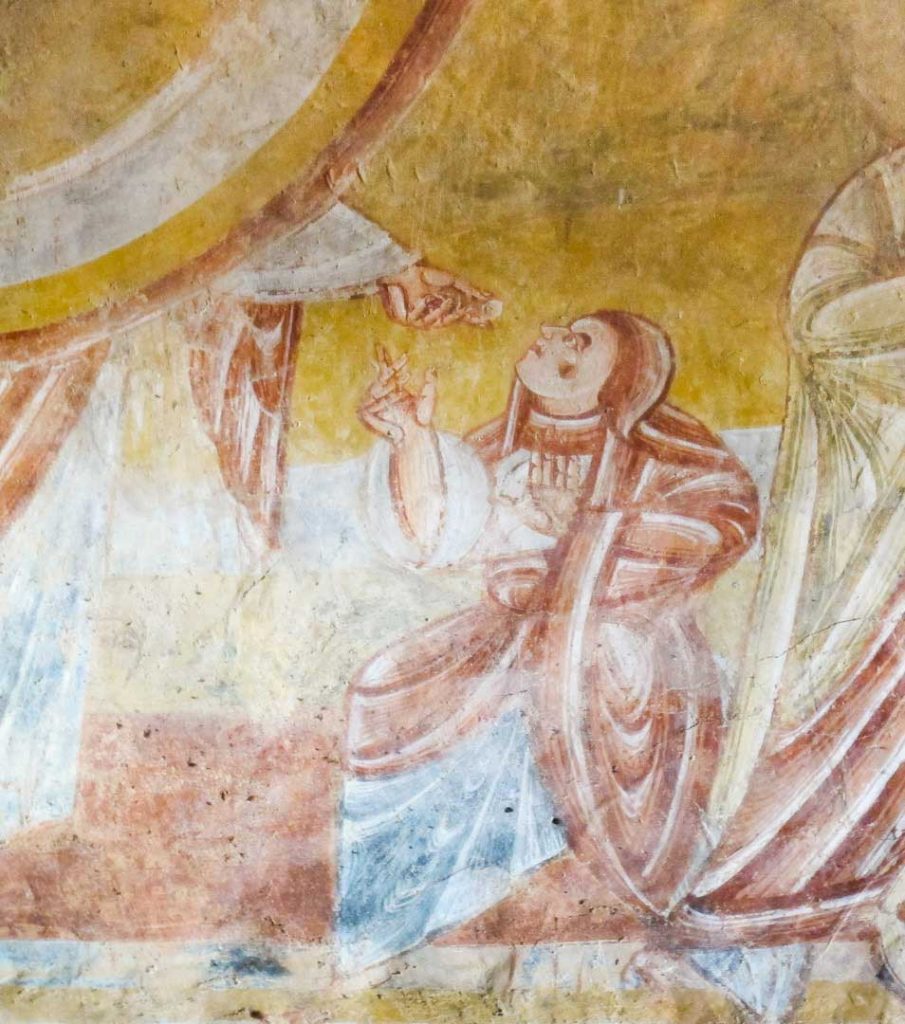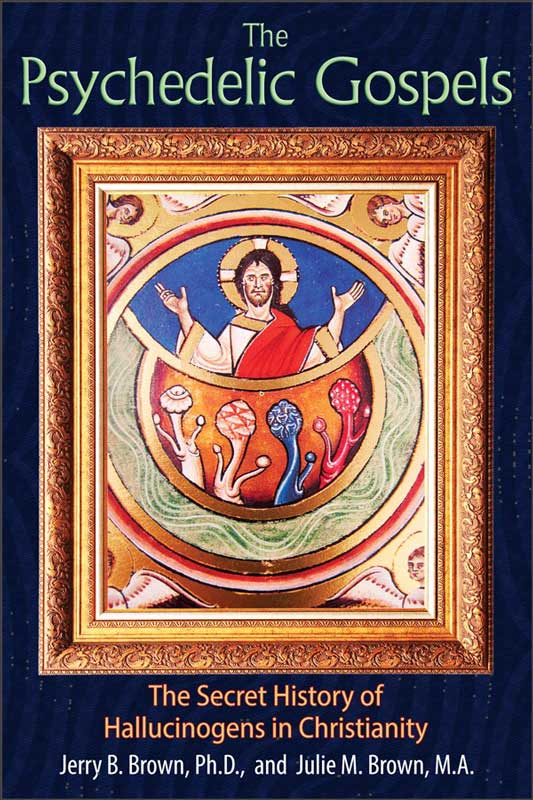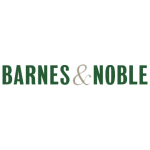The following is an excerpt from The Psychedelic Gospels
The Prophet Has Spoken
Nohant-Vic, France—1120
The Church of St. Martin sat unpretentiously amidst a cluster of modest two-story stone homes with pitched roofs; their terracotta tiles glistened with the light rain.
A plaque in the parking lot described the murals as “the work of an artist of genius, which portrays the theme of Redemption, from the Error of Adam to the Last Judgment.”
Stepping across the threshold was like having cataracts removed from your eyes and suddenly seeing in vibrant color and high-definition. Here the rich red, ochre, and white hues of the nativity scenes in the nave were a prelude to the panoply of powerful paintings that filled the choir in the adjoining room.
Once inside, Julie and I were enchanted by the majestic visual feast of frescoes guarded over by rosy-cheeked seraphim. The church bells began to peal, transporting us back to medieval times. Julie took my arm and turned me around to look at the wall-length panel of Christ’s Entry into Jerusalem. “Do you see what I see?” she asked in amazement. There was no way I could miss the smooth caps of five psilocybin mushrooms. The brown-and-white colored caps gracefully spread out over the heads of the three joyful youth welcoming Jesus into the city for his messianic date with destiny.
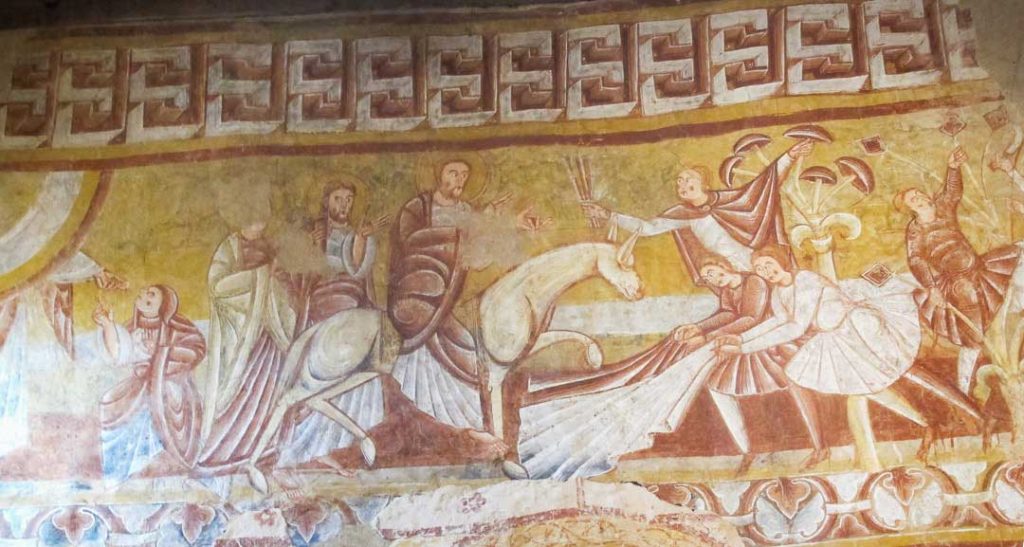
Fresco on south choir wall, St. Martin de Vicq, early twelfth century.
Photo by Julie M. Brown
“Look how big these mushrooms are, as big as the heads of the young men,” Julie noted.
“Size matters in Romanesque art,” I replied, “because the painter is calling our attention to its importance.”
“Now step back and tell me exactly what you see,” I said. She spoke slowly, while rapidly clicking photos, as if she were rushing to capture these images before they could disappear, even though they had been here for nearly a thousand years.
“I see a man kneeling before a much larger robed figure, possibly an angel entering the scene from above, whose body is bathed in concentric circles of light. There is a hand coming out of the light. Between the thumb and index finger is a tan, roundish object that is being offered to the man who is looking up in awe.”
“Anything else?” I inquired.
“Yes, the robes of the angel and of the kneeling man, and the border below them, are painted sky blue. This color also tints the robes of Jesus’s disciple.”
“Why do you think that’s Jesus?” I asked.
“Because he’s riding on an ass, which is how the Bible depicts his entry into Jerusalem at Passover. Walking directly behind Jesus are two men holding their arms up in the gesture of standing in awe. Jesus is sitting on an ass with his arms reaching out toward the youths who are greeting him. One of the youths is leaning forward, holding on to the stem of an oblong mushroom in his left hand, while offering Jesus, with his right hand, three stems whose tops have been painted over or somehow obscured.”
“While the youth holding the mushroom is wearing a cape, the two youths below have taken off their capes, unfolding them to welcome Jesus as if rolling out a royal carpet. The furls in the capes extend all the way below the figure of Jesus and are repeated in the robes of the disciples as well as in the robes of the kneeling man and the angel, visually tying both scenes together.”
Julie turned to the right and said, “Jesus and his disciples are traveling toward the gates of Jerusalem, where a rotund man on top of the tower is using a long knife to cut through the stem of a mushroom. It’s the same shape and color as the mushrooms in the last scene. These towers are adjacent to the scene of the Last Supper, where Jesus and eleven of his disciples are gathered behind the table, while the twelfth disciple, probably Judas, is kneeling on the other side.”

Photo by Julie M. Brown
“Jesus is extending a very long arm toward Judas’s mouth, holding something in his fingers out to Judas, similar to the way the angel is holding something out to Isaiah. I can’t tell what it is. But, look, there are four long knives on the table, just like the one used to cut down the mushrooms in the adjoining tower scene!”
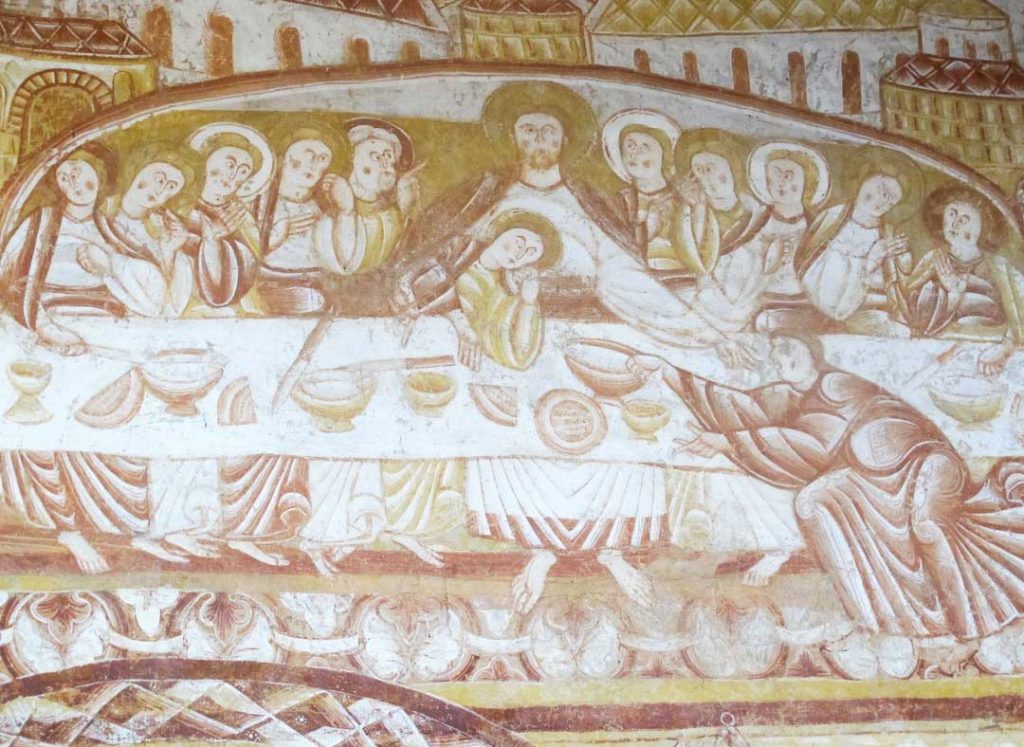
Photo by Julie M. Brown
“Isn’t the Last Supper supposed to be a Passover meal?” I asked.
“This is definitely not a Passover Seder, because there is no Pascal lamb or wine goblets, only bowls and round objects,” Julie pointed out. “In fact, the mushroom caps being cut on top of the tower and the objects on the table share the same round form, size, and coloration. This repetition of mushroom caps and knives connects the scenes visually and also suggests a sequence from the cutting of the mushroom caps to their later appearance on the table. And, look at the way in which the table itself is rotated forward so that it’s parallel with the plane of the entire picture. In combining scale–the large size of the mushroom caps–and perspective, the artist is calling attention to the objects on the table.”
Julie grabbed her camera, zoomed in on the Last Supper, and then passed the camera to me, telling me to look closely at the robes of the disciples seated to the left of Jesus. To my surprise, neatly drawn into the folds of their hems were four umbrella-shaped psilocybin mushrooms caps whose stems were all linked together.
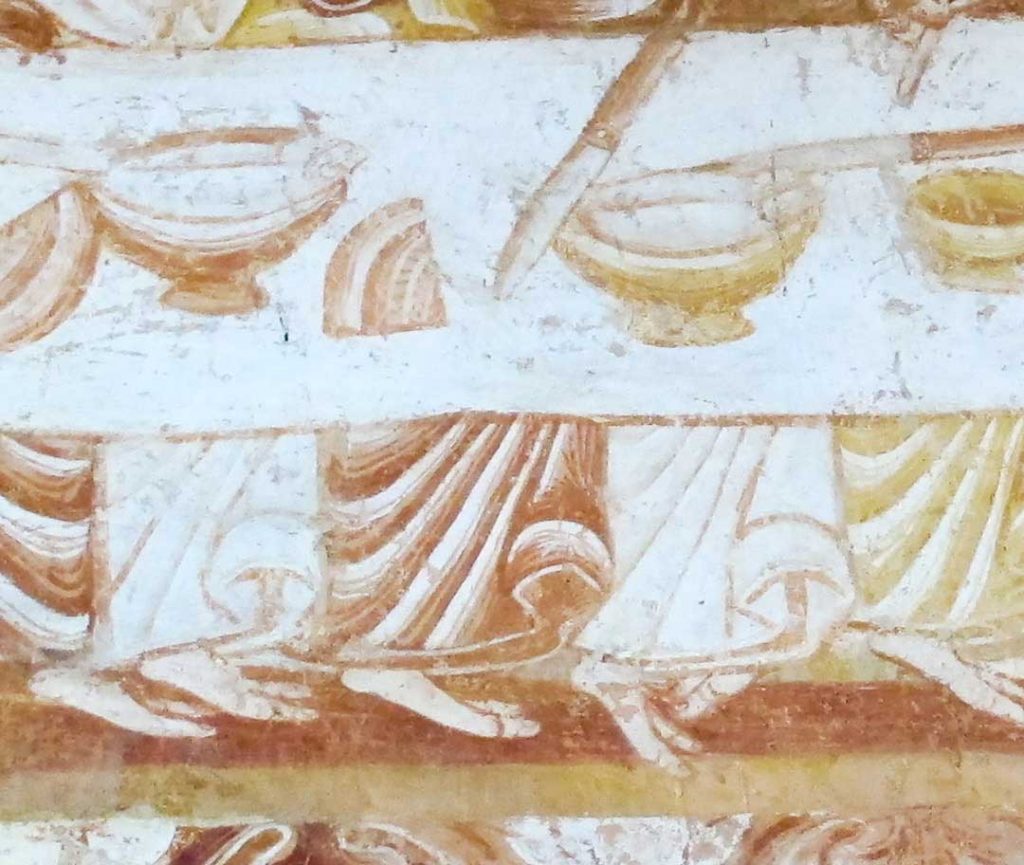
Photo by Julie M. Brown
“Look!” I said, “There’s also a mushroom in the hem of the disciple directly to the right of Jesus as well as two more at the tip of Judas’ robe. The artist painted the mushrooms into the folds, as if trying to disguise them. These mushroom hems are neatly aligned because the artist is telling us how important they are–a way of informing initiates that entheogens were present at the Last Supper.”
